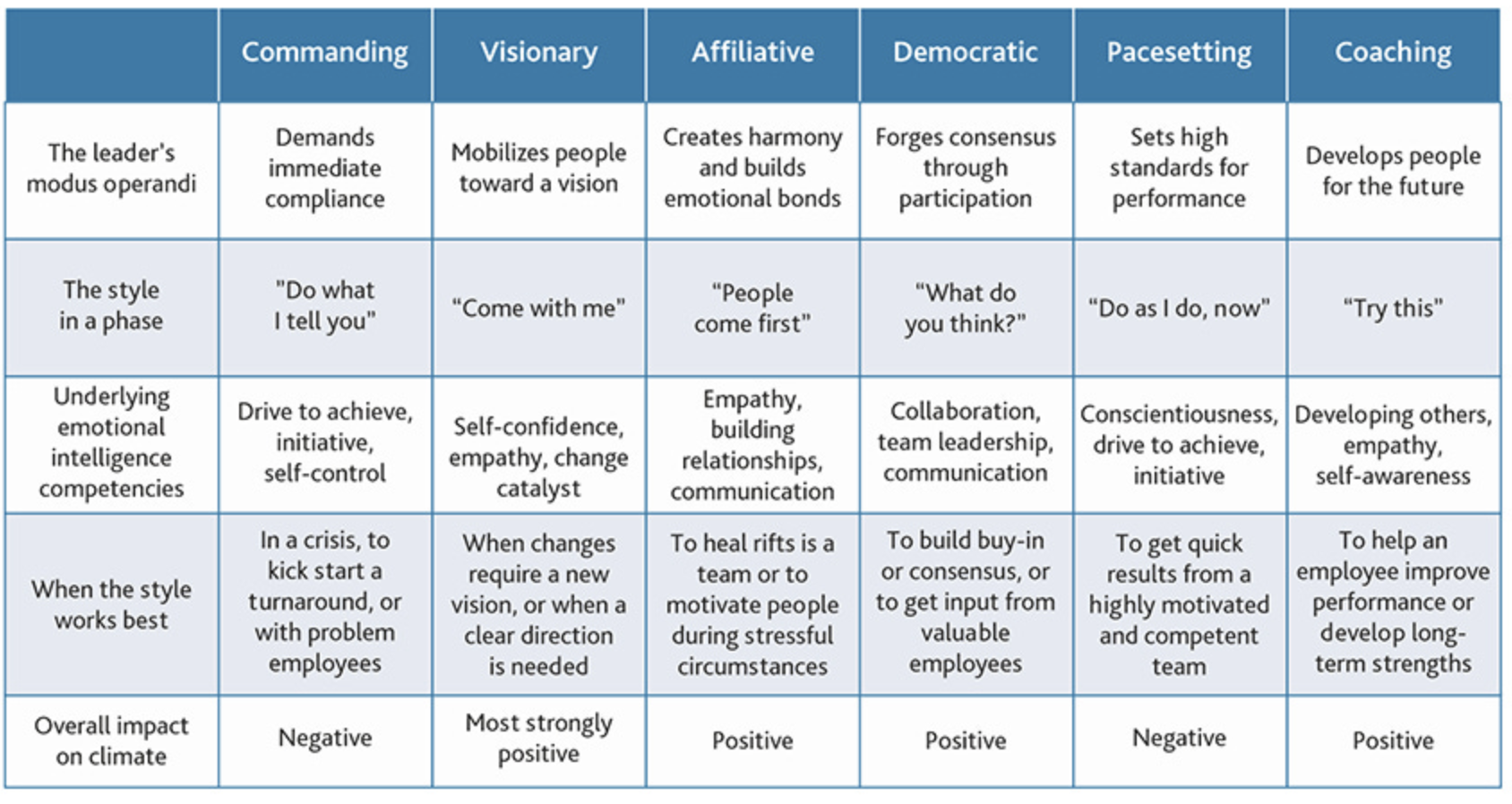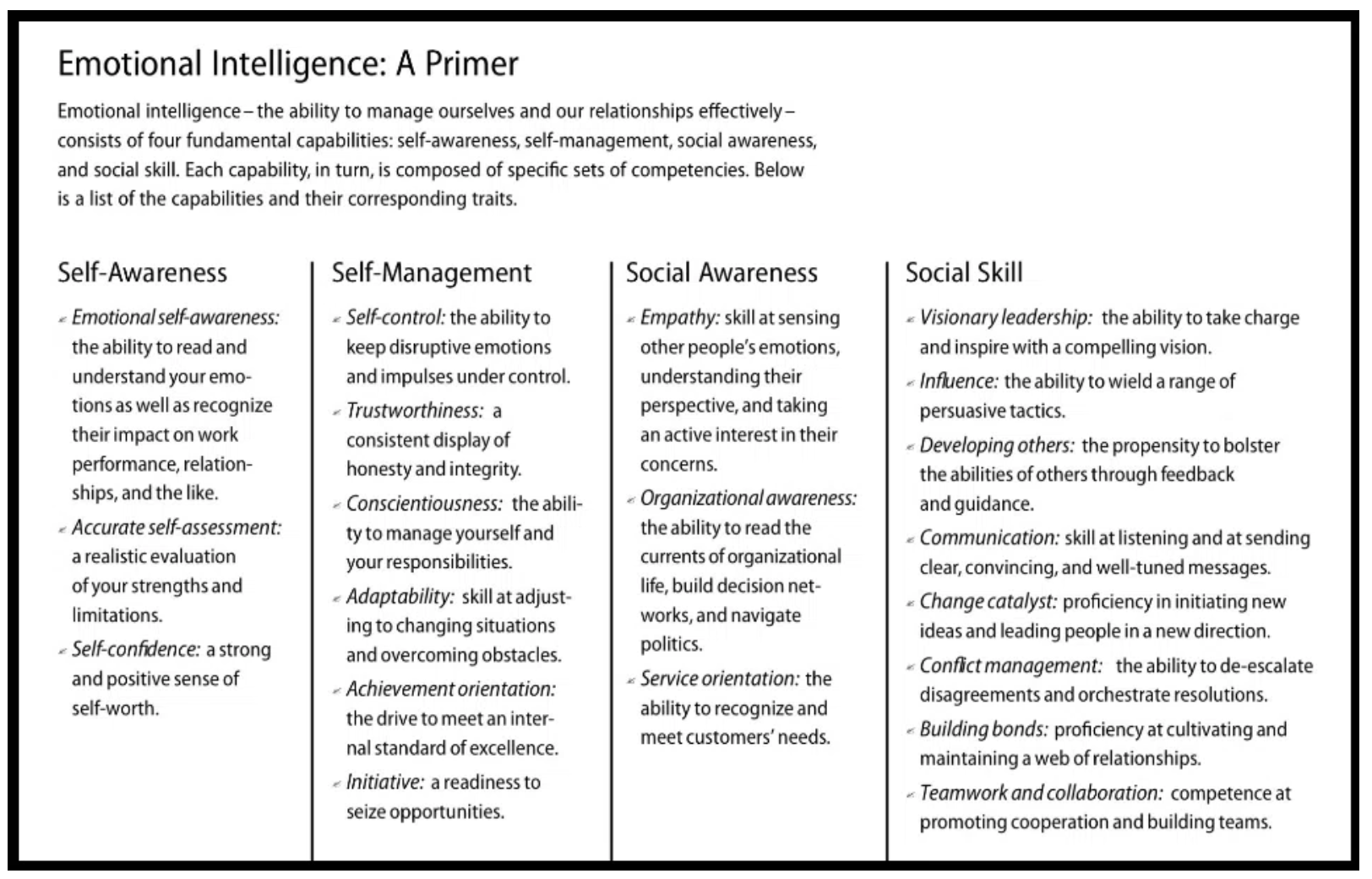Leadership styles
Daniel Goleman explains that effective leaders need to be flexible in their leadership approach depending on business needs. He describes 6 approaches based on his research across 3,871 executives and mentions that the best leaders should have mastered at least 4 of the 6 approaches.

Daniel also explains that leaders with high emotional intelligence tend to be able to switch fluidly between these leadership styles, and that it is possible to improve emotional intelligence over time with self-reflection.

A quick summary of the 6 leadership approaches-
- The coercive approach is about extreme top-down decision making. It is forceful and effective only in very specific circumstances e.g., emergencies, hostile takeovers, problem employees. It should be avoided otherwise as it kills morale.
- Authoritative leaders motivate people towards a vision. It is a quintessential approach and is very effective. One exception is when peers are markedly more experienced or significantly more skilled than the leader.
- The affiliative leader builds a sense of belonging and is likely to take their reports out for a meal or a drink. It’s great for building morale or broken trust. However, an exlusive focus on praise can allow poor performance to go uncorrected, so it should be used in combination with other approaches.
- The democratic leader gets buy-in from a variety of stakeholders. Morale is usually higher in such teams but it may involve endless meetings and slow alignment. It doesn’t work when employees are not competent or informed enough to offer suggestions.
- The pacesetting leader sets high standards and exemplifies these standards herself. This leader demands perfection and tends to micromanage. Poor performers are replaced quickly. This style tends to erode morale and creates an unsustainable, pressure-cooker environment. It is effective when the team is highly motivated and competent.
- Coaching leaders encourage long term growth of their reports. They provide opportunities to learn and feedback to improve over time. This may not work if the leader lacks expertise to provide feedback or the report is unwilling to change.
Daniel provides an example to explain how a leader has to be nimble and fluid. In his example, a firm hires a new leader to turn a division’s morale and profits around. The new leader first takes her reports for lunch and dinners to learn about problems (affiliative). Then the leader finds ways to help reports achieve their goals (coaching). The leader also organizes an offsite to gather solutions (democratic). Finally the leader sets the vision around these solutions and holds executives accountable to the goals (authoritative). In the initial few weeks, the leader may need to shift into the coercive style should someone fail to meet their goals.
